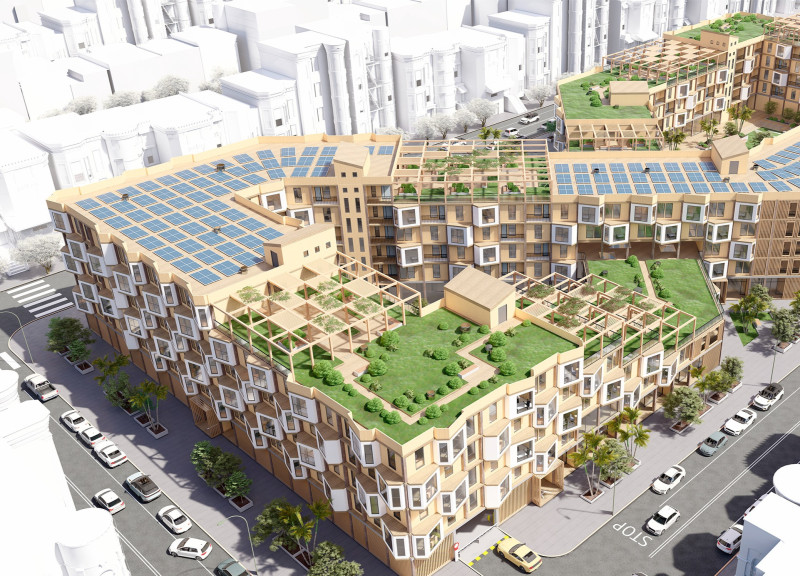5 key facts about this project
The S+2 House showcases a contemporary approach to urban housing in San Francisco, California, aiming to address the growing need for affordable living solutions. This architectural project consists of a series of modular units designed to optimize living space while ensuring sustainability and practicality. By employing innovative engineering and construction methods, the S+2 House presents a well-structured response to urban housing challenges.
Design and Functionality
This architecture integrates multiple unit typologies, ranging from 20 to 50 square meters, each catering to diverse resident needs. The project employs Cross-Laminated Timber (CLT) as the primary construction material, offering structural efficiency and sustainable characteristics. The incorporation of green roofs, solar panels, and rainwater harvesting systems further enhances the building's environmental performance, promoting a reduced ecological footprint.
The design emphasizes community-focused living, featuring public spaces on the ground floor that include retail shops and community gathering areas. This arrangement facilitates interaction among residents, fostering a sense of belonging within the urban environment. The unique figure-eight configuration of the building not only aids in maximizing natural light and views but also allows for flexibility in design, enabling residents to modify their spaces as needed.
Sustainability and Community Integration
The sustainability initiatives embedded in the S+2 House are significant. The use of renewable energy sources and water conservation methods underlines the project’s commitment to reducing resource consumption. The emphasis on modular construction techniques ensures efficiency and reduced waste during the building process, addressing common concerns associated with urban development.
In addition to its sustainability features, the focus on community integration sets the S+2 House apart from conventional residential projects. By positioning communal areas at ground level, the architecture invites social interaction. Such elements not only enhance the living experience but also provide opportunities for residents to engage with neighboring amenities, promoting an active and connected lifestyle.
Architectural Efficiency and Adaptability
The architectural design prioritizes both efficiency and adaptability. Each housing unit is constructed with flexibility in mind, allowing for potential modifications to accommodate changing lifestyles. The arrangement of units in a modular format streamlines construction and can be scaled to meet varying demands within the community.
The strategic layout also contributes to effective spatial planning, optimizing available land while reducing the reliance on extensive external infrastructure. As a result, the S+2 House serves not only as a residence but as an example of how urban architecture can respond to the multifaceted requirements of modern city living.
Explore the project presentation to gain deeper insights into the architectural plans, sections, designs, and innovative ideas that constitute the S+2 House. This exploration can provide a broader understanding of how contemporary architectural solutions are shaping urban environments.



























